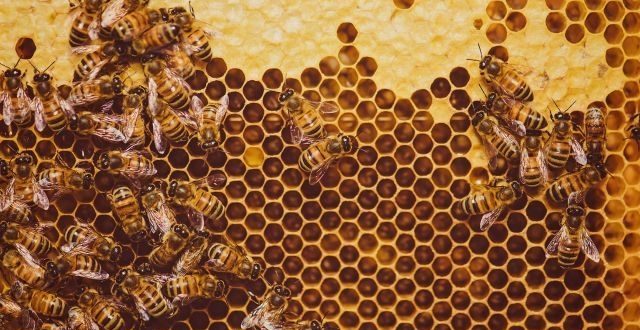Scientists have foundtraces of neonicotinoid chemicals in honey samples taken from numerous bee populations across the world, according to a recent study in the journal Science.
Researchers tested around 200 samples of honey gathered from all over the world, except Antarctica. The results were startling, as they discovered high pesticides levels.
Leading the way in honey pesticide contamination is North America, with 86 percent, Asia, with 80 percent, and Europe at 79 percent.
Researchers found 30 percent of the honey samples contained one pesticide, while roughly 45 percent contained two pesticides with up to five different types of neonicotinoids chemicals. This means that 75 percent of our honey is tainted with chemicals, as the makers of these pesticides continue to say they are safe.
Honey bees gather nectar and help pollinate plants. They are vital to maintaining plant life throughout the world. If the bees die because of chemicals, the food source will diminish for every living thing on the planet.
People across Europe are banning together to stop the use of neonicotinoids from being applied to farm crops. Citizens want the pesticides banned completely and permanently removed before our health and planet are destroyed by the chemical toxins.
Nature campaigner Sandra Bell, from the group Friends of the Earth, asked the environment secretary, Michael Gove, for help.
“The discovery of bee-harming pesticides in honey samples across Europe reinforces the need for a complete and permanent ban on these chemicals. Honey is a vital source of food to bees, not just a sweet treat for humans, so finding that so many of the honey samples contained a cocktail of these pesticides is a real concern — especially as scientists warn that exposure to a mixture of chemicals can be more harmful. Nothing short of a full ban will protect our bees.”
Although the experts may call the test results “alarming,” they continue to stress that there is nothing to worry about. The amounts, according to the experts, fall well below the safety margins and pose no risk to human life. However, Dave Goulson, Professor of Biology at the University of Sussex, doesn’t believe pesticides have safe levels. No one knows the health risks that may show up after they are consumed after so much time has elapsed.
“Beyond doubt… anyone regularly eating honey is likely to be getting a small dose of mixed neurotoxins.”
Neonicotinoids are used on plants and seeds as a way to protect food crops from aphids, grubs, and other bugs that threaten our food supply. The chemical is absorbed into the entire plant and is said to act like nicotine.
After years of research, scientists discovered that even under controlled conditions, neonicotinoids are hazardous to bees and other pollinators. The chemicals mess with their learning and memory systems. It leaves them vulnerable because they cannot find nectar or pollen which they need to survive.
The warning signs that our bees were in trouble began around 10 years ago. Then, in the winter of 2015 through 2016, it became more apparent when the United States lost over 28 percent of their bee colonies.
Dr. Chris Connolly, reader in neurobiology at the University of Dundee, referred to the findings as “timely” and should bring our attention to the risks of pesticides on bees and plants.
“The levels detected are sufficient to affect bee brain function and may hinder their ability to forage on, and pollinate, our crops and our native plants.”
Dr. Chris Connolly went on to say the following.
“Clearly, the use of neonicotinoids need to be controlled. Their widespread use on crops is due to their prophylactic use, as insurance against the possibility of future pest attack. The neonicotinoids are highly effective insecticides with low toxicity to humans, but this unnecessary overuse is also driving the development of pest resistance against them. It is time that these chemicals are heavily restricted for use.”
Agencies/Canadajournal
 Canada Journal – News of the World Articles and videos to bring you the biggest Canadian news stories from across the country every day
Canada Journal – News of the World Articles and videos to bring you the biggest Canadian news stories from across the country every day



